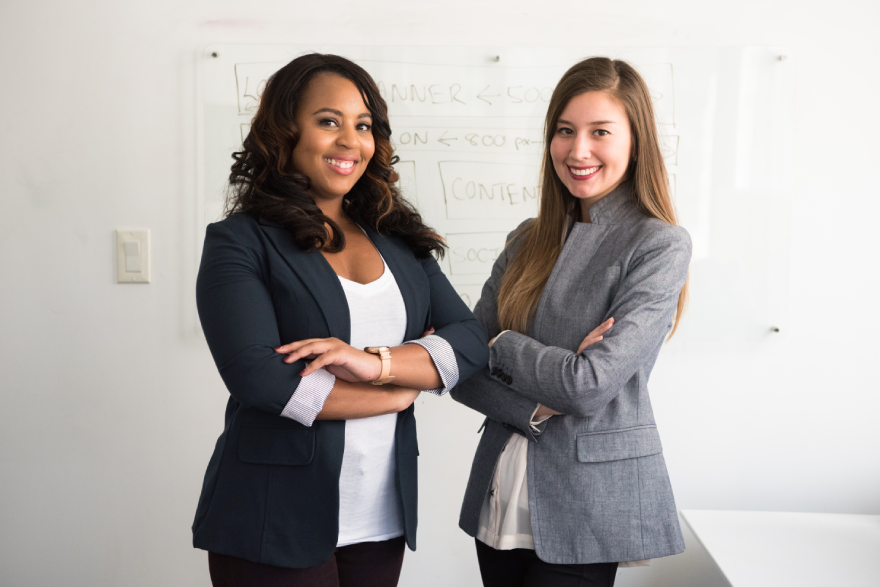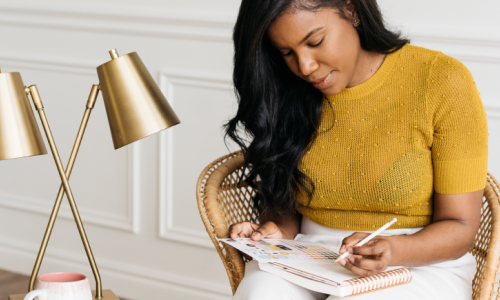
Putting together a proper wardrobe for the workplace can be tough, doubly so if it’s your first office job. As a student or recent grad, you probably think you don’t have the cash to put together an awesome collection of clothes, especially if you’re essentially starting from scratch. It doesn’t all need to be doom and gloom however. With a few key pieces you can create enough great outfits that will fit in at any office.
When reading this list keep a few things in mind:
-
Use neutral colours. Black, beige, navy, or grey can make a great base and will go with almost anything. You’ll save yourself a lot of time and stress in the morning.
-
Load up on basics and solid colours, leave patterns or trendy items for when you find something truly great.
-
If you find something you love that fits well, buy it in multiple colours. The same top in blue or red can still look surprisingly different.
-
Don't spend a fortune on the latest trend. If you want to expirement with a flashy trend do so with cheap accessories, you'll be able to work them into lots of different looks, and you won't be out too much cash when trends change next season.
-
In general, you can go cheap on accessories, they don't need to withstand the wear and tear your clothing goes through. Exceptions: Shoes and bags.
-
A really nice pair of dress pants, a great pencil skirt, and a well-fitting blazer or suit jacket are all investment peices that are worth spending extra money on. You'll be wearing them a lot, and you'll want them to last.
-
Fit matters. If something doesn’t fit you right, and you aren’t going to put the effort in to have it tailored, don’t get it. A great find doesn’t look great if it fits wrong.
-
Most people use only 20% of their wardrobe to put together 80% of their outfits. This means you don’t need to do a complete closet overhaul to have work clothes. Just make that 20% count.
-
Khakis or Jeans. This one depends on your office, but any business casual office will allow khakis and many will allow for jeans as well. The most important factor for both is fit; nothing too baggy or uncomfortably tight. For jeans, opt for a dark wash.
-
Dress Pants. This is your number one staple. Depending on your office dress code, you could be wearing these almost every day. Start with at least one well-fitting pair in black, from there you can add grey or opt for a couple of different cuts. Alternatively, if you find a pair that works, buy three. Your best cut will depend on your build, so don’t be afraid to ask a salesperson.
-
Blazer/Suit Jacket. You can dress up any outfit with a nice suit jacket or blazer. Start with one in basic black, if you want to add a second look consider grey, tweed, navy, brown, or something with a very subtle pattern.
-
Dress Shirt. Figure out your size in a brand you like that fits well and buy three to five in the colours of your choice. I suggest white, black, blue, and a subtle stripe to get you started.
-
Polo Shirt: These are great, versatile shirts. Wear them with khakis for a more casual look, or pair with a blazer. Have some fun and choose almost any colour here, if you chose you others basics right, they should match any pop of colour you opt for here.
-
Sweater. Chose one in a dark colour with a very slight v-neck. You can wear it on its own, or dress it up a little by putting it on over a dress shirt, or under a blazer. Consider adding more sweaters in a light blue, argyle or a stripe.
-
Shoes. With few exceptions, runners are not appropriate at work. Invest in one or two pairs of nice dress shoes (black or brown).
-
Socks: Buy a large pack of black dress socks. If you want to show some personality, choose a few fun printed ones, but stay away from white.
-
Messenger Bag. You’re more likely to need something that can hold a laptop or tablet than a file folder, so you’ll probably want to opt for a messenger bag over a briefcase. Choose one that can hold your lunch and anything else you’ll be bringing to and from work regularly. Lots of interior pockets are your friend. Unless you really need it, don't bring your backpack, a messenger bag looks at lot more professional.
-
Downy Wrinkle Release Spray: This will be your best friend if you forget to do laundry. It gets wrinkles out in seconds and leave clothes smelling great. Just note that while helpful, it is nowhere near a substitute for laundry. Think of it as an extra health bar, not an extra life.
-
Dress Pants. You’ll be wearing these often, so find the nicest pair you can reasonably afford; you’ll want them to last. Find a cut the compliments your build, and that fits you well. Start with a black pair, then try another in grey or brown to get you started. Don’t forget to consider if you’ll be wearing heels with them when you try them on, or they’ll be too long or too short.
-
Blazer. While there’s nothing wrong with having a cute blazer in every colour and cut, you’ll probably want to start with one in black or grey. It will go with basically everything. Try a few different styles: Classic, Rolled sleeves (where you can show a pop of colour), and an over-sized mens style. If branching into colours I suggest white, red, or dark blue/purple.
-
Pencil Skirt. A classic pencil skirt is a must for the modern professional woman. You can wear them with a variety of blouses, and optional jackets and belts. They’re perfect when your day starts in the office and ends at a bar or restaurant. Solid neutral colours go with more things, but a pattern or bright colour can be a great work appropriate statement piece. Just remember the fingertip rule: Your hem should always go past your fingertips when standing.
-
White Dress Shirt. They may seem boring at first glance, but they’re a standard choice for a reason: They can form the base of many an outfit, and can be used for many different looks. Versatile items are important, especially when you’re still building up a wardrobe.
-
Practical, Close-Toed Heels. Choose a dark colour and reasonable heel height and you can’t go wrong. Once you get a feel for your office you can start breaking out boots, and multi-coloured flats if appropriate, but you’ll never go wrong with classic black pumps.
-
Simple Printed Dress. This dress will be your savoir when you sleep through your alarm and need to get out of the house ASAP. You don’t need to pair them with anything; throw on your blazer, black heels, and possibly some tights, and it’ll look like you planned it all along.
-
Fitted Cardigan. This is a great layering piece on cold mornings, or a more casual replacement for a blazer. Take note, this isn’t the same giant sweater you wear at home. It should be comfy, but still professional.
-
Tights. They’re cheap, and can keep you warm in skirts and dresses all year long. Note that I said dresses, not shirts. These aren’t pants, don’t treat them like they are.
-
Functional Bag. Buy one that can hold everything you’ll be toting to work every day with room to spare, and that can do it without falling apart in a month. Your bag should look professional and be large enough that when filled you can close it completely for your commute. Bonus points for an easy access cell phone pocket.
-
Classy Coat. You’ve dressed great for work, don’t cover it up with a jacket that still has your ski lift pass attached. Find a nice trench or pea coat, and living in Vancouver you’ll need a hood.















